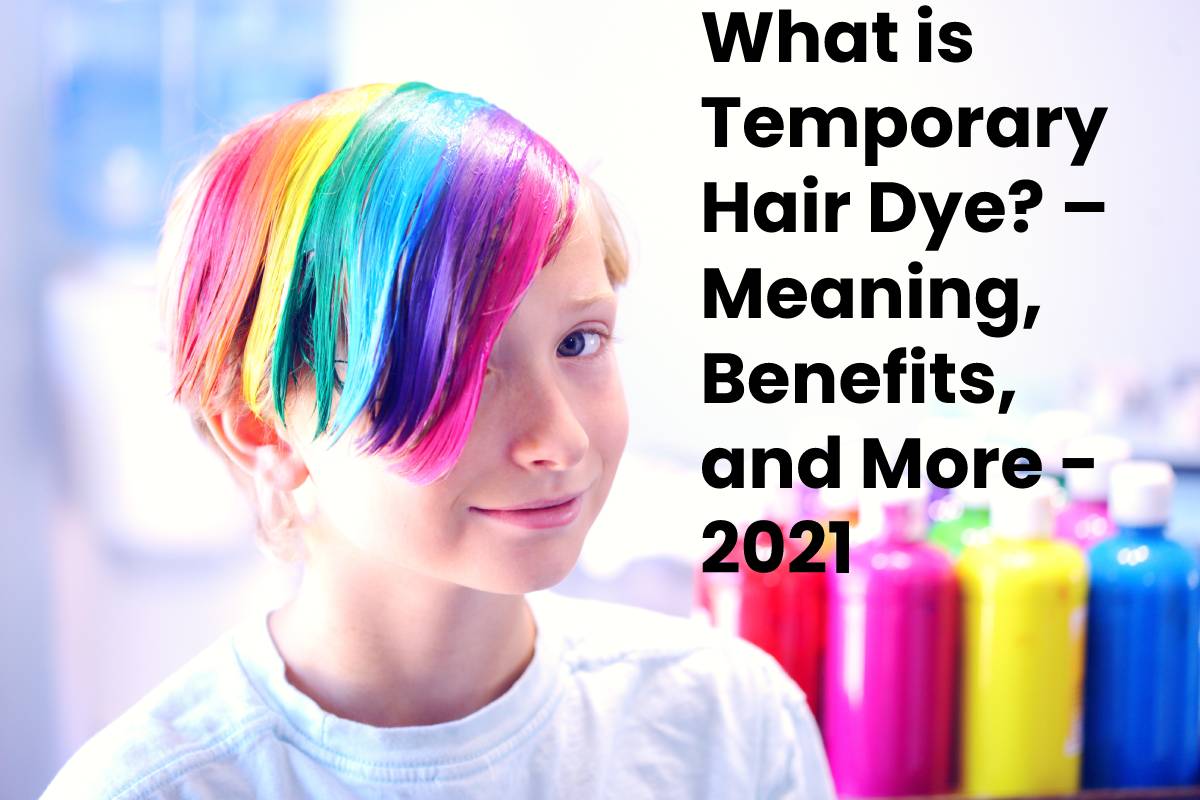Table of Contents
Meaning
Temporary Hair Dye, These are add color to the hair in a superficial way, without transforming or affecting the natural color of your hair.
You find them in cream, wax, gel, spray, or chalk.
Although there are also some homemade recipes to make them with ingredients like vegetable coloring or crepe paper.
Due to its composition, temporary hair dye tends to dry out hair.
That is why it is advisable to apply it on a perfectly hydrated mane.
A few days before coloring, give your hair an intensive hydration treatment with the Sedal Maximum Hydration 1 Minute Super Conditioner.
It is applying in the shower, and in just one minute, your hair will be moisturized and silky to the touch.
What are the Benefits of Temporary Dye?
1. Ideal if you want to experiment
As the color only temporarily stays in the hair, you can try new shades without taking a significant risk.
2. Respectful with the Hair
The pigments are only depositing outside the hair, and the cuticle does not open.
A new color in a gentle way!
3. Balance
The color is gradually lost, there are not very pronouncing differences in the hair, and the root does not stand out when your natural hair grows.
4. Extra shine
You can keep your natural hair color and revive it with this type of coloring, as it produces a sublime shiny effect.
As you can see, both coloring methods have significant advantages.
Deciding on one or the other depends on what you want to achieve with your new color and the results you wish to obtain.
What is the Difference between Dye and Color Bath?
One of the preferred formulas for temporary coloring is to use a color bath on your hair.
The main difference between a dye and a color bath is the formulation.
The color bath has a formulation based on vegetable ingredients, which helps prevent the hair from suffering attacks caused by the dyes’ chemical components.
The hair color dip is using as a temporary dye or intensifying a base color.
It is the ideal option if you do not have to cover gray hair since it also helps to hydrate the hair.
The color bath application on the hair is similar to that of a shampoo or a mask.
You must distribute it evenly throughout the hair, massage it, and let it take effect.
The duration will be about 5 or 6 weeks, depending on the color.
Instead, hair dye contains a chemical composition.
Your hair is more likely to be damage by a stain than a color dip, although dye formulations have improving a lot in recent years, and we can buy ammonia-free dyes that are gentler on hair.
If we dye our hair with a permanent stain, it is necessary to touch up the roots every 30 days.
Therefore, choosing between stain or color bath depends on your needs.
If you want to cover gray hair or radically change color, it is best to opt for a permanent dye.
And if you’re going to reinforce or intensify your hair color, a color bath is the least aggressive option.
How much Damage can a Temporary Hair Dye Do?
The hair painting or staining can be a great way to experience a new look without having a session with scissors.
Sometimes we are not looking for a permanent change, instead of a color boom for a few days.
Either for a music festival like Coachella or simply because we want to live a new vibe for a few days or weeks.
In these cases, permanent dyes are not an option.
Since this type of coloring is extremely deep, it penetrates to the inside of the hair fiber and, with its oxidizing agents, removes the natural pigment of the hair.
In such a way that the pigments of the new color permanently fix in the hair.
For a few-day color look, temporary hair dye is the option.
This product contains pigmented molecules that adhere to the outside of the hair or penetrate only the hair shaft’s superficial area.
That is, they do not reach the hair marrow.
The degree and time of fixation of temporary dyes’ pigment depend on each one’s ingredients and formulas.
Some colorations disappear after one or two washes, while others remain in the hair for up to a period of three to five weeks.
However, despite not containing ammonia or peroxide or having low amounts of them, these dyes influence the hair’s general structure.
If your hair is already looking damage, brittle, split-ended, or weak, you will likely react negatively to the chemicals in the temporary dye.
So it will come as no surprise that hair looks much more damage after being exposed to this type of coloring.


